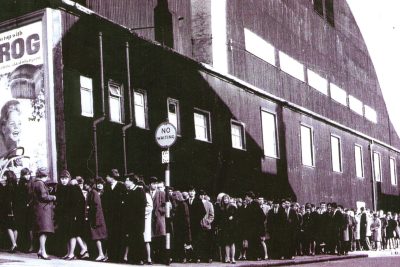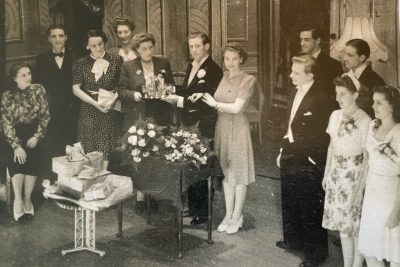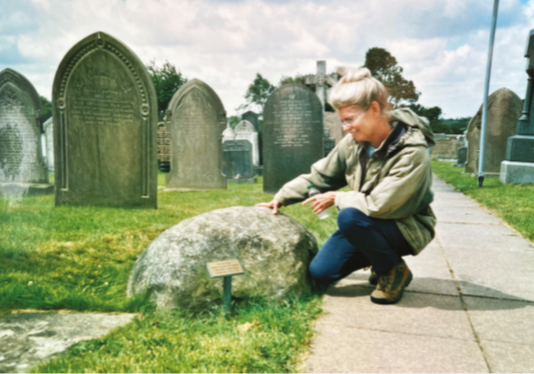
‘Witch’ Is The Real Grave?
by Graham Dugdale
Graham Dugdale asks the pertinent question that dominates the Lancashire village of Woodplumpton...
Strange tales of mystery and imagination have long played a fascinating role in our country’s rich and varied heritage.
This is certainly relevant to the county of Lancashire. Such myths and legends have long stimulated feverish debate about their veracity, none more so than when fact and fantasy merge into a nebulous homogeneity. Many of the more eccentric occurrences can be explained logically. A trick of the light or the sound of wind howling through the trees. When recounted over a tankard of ale, such experiences can, however, assume exaggerated proportions. Passed down through generations, often by word of mouth, these folktales become ever more outlandish.
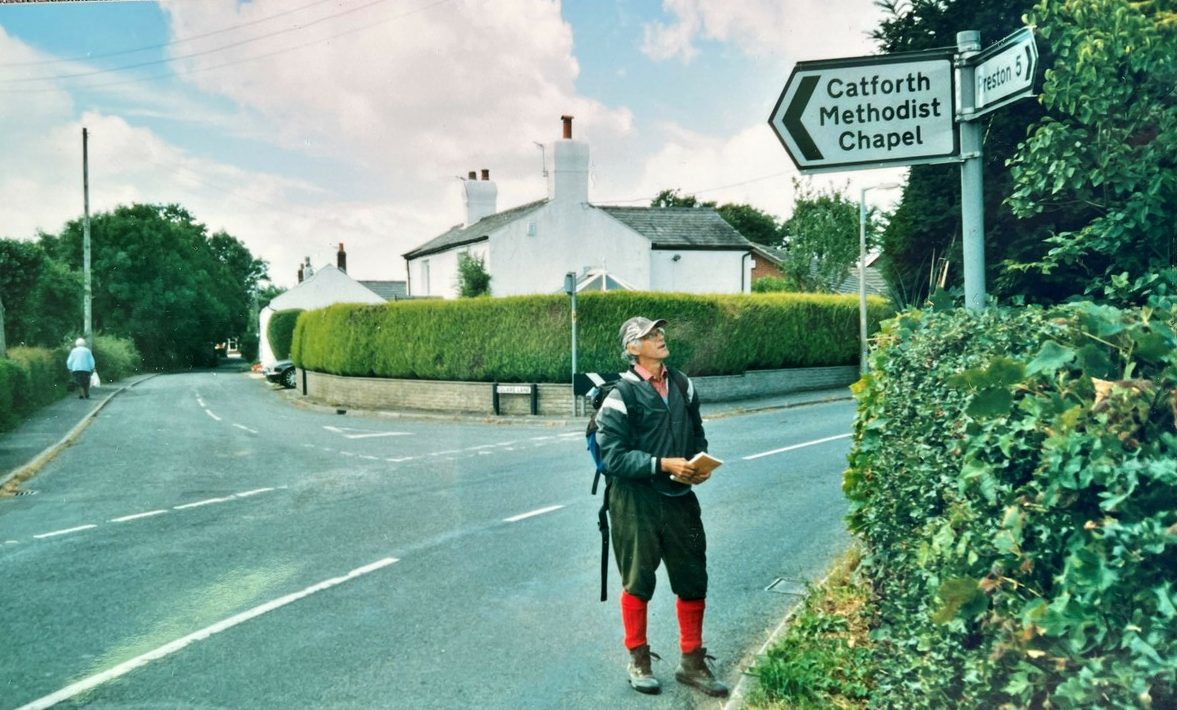
Where did Mary Shelton live?
Lancashire smugglers were especially fluent in the invention of ghosts to scare off the over-curious from delving into their sphere of operations. This was in times when unlikely situations were readily accepted by a gullible populace. Those involving real people with colourful pasts, however, cannot be taken with a pinch of salt, even when their escapades have been embellished under changing circumstances over time.
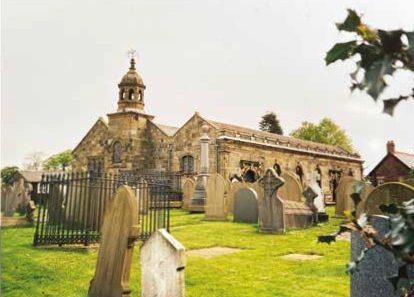
St Anne’s Church
So, what is the fine line which irrevocably marks the divergence of truth from fiction? It remains a question that has been posed many times since stories of ghosts, boggles, and murky characters were first conceived by those who claim to have experienced their appearance first-hand. Such quaint and unusual phenomena have become an established feature of our Lancashire heritage, just as much as hot pot, Eccles Cakes, Bury black pudding or clog dancing.
The village of Woodplumpton, hidden away in the expanse of flat land north of Preston known as ‘The Fylde’ harbours just such a conundrum. Originally situated close by a plum tree, the settlement has a much more ancient pedigree than a cursory glance might suggest. First mentioned in the Norman Domesday Book in 1086, the name of Wode Plumpton was adopted in 1336. Driving down the main street, there is little to interest the casual visitor until the church of St Anne is reached. Approached through an august lychgate, with the old stocks close by, a potent cognizance of antiquity immediately assails the senses. Christian worship has been conducted on the site since the 11th century. The church is relatively recent, dating from 1639, being refurbished in the early 20th century. The unusual bell cote further augments the church’s architectural appeal.
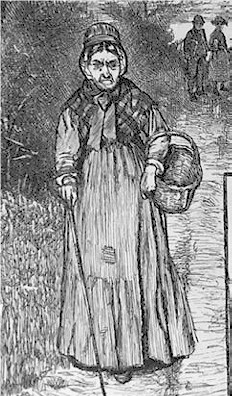
But what marks St Anne’s apart from its counterparts in other nearby villages is to be found at the side of the path close to the main entrance. Look more closely, and you cannot fail to notice a prodigious boulder under which lie the remains of Marjorie Hilton – better remembered hereabouts as ‘The Fylde Witch.’
“One farmer who suspected her of stealing corn lay in wait numerous times but was never able to catch her in the act. “
More commonly referred to as Meg Shelton, any underhanded chicanery occurring in the district was inevitably laid at Meg’s door. Perhaps she was a cantankerous old crone, also prone to fits of bad temper. ‘Crafty, deceitful, sly and grasping’ are just a handful of the epithets heaped upon the poor woman. That said, she was never actually caught in the act of turning milk sour or encouraging stillborn calves.
One farmer who suspected her of stealing corn lay in wait numerous times, but was never able to catch her in the act. One night, he did see her enter the mill and, on counting his sacks, found that there was one too many. Seizing a pitchfork he began thrusting it into each sack until a frightful yelp of pain rent the air. Meg leapt from the sack, allegedly jumped on her broomstick and flew off.
A nightmarish event, doubtless regaled to his pals over a noggin or three as they gleefully pulled his leg. But at least the farmer never had any more corn stolen. Locals probably still mull over this mythical happening on a rainy afternoon in the Wheatsheaf Inn at Woodplumpton. But Meg Shelton was certainly no figment of an over-imaginative populace.
She actually did live at Cuckoo Cottage in Wesham but spent most of her life in nearby Catforth where she is said to have arrived in bizarre circumstances. Meg supposedly struck a bewitching bargain with her landlord that involved her changing into a hare. If she succeeded in evading the chase by his dogs, the Catforth cottage would be hers. The scheming fellow released an unduly rapid hound that snapped at her ‘harey heels’, resulting in the distraught harridan sporting a limp thereafter.
In the event, Meg did acquire the cottage remaining there until her death in 1705. Crushed it is said betwixt a barrel and a wall, she was nonetheless adjudged to be worthy of a Christain burial, never having been ‘examined as a witch.’ In essence, this involved a dubious meeting with the infamous ducking stool specially reserved for those dabbling in the black arts. Those who sank and drowned were innocent. Lucky Meg! But she didn’t get off Scot-free. The good citizens of Woodplumpton determined that the funeral ceremony should be in keeping with her suspect lifestyle. Accordingly, she was buried at dead of night.
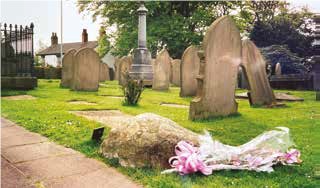
Who left the flowers in the grave yard?
But Meg was to cause more skulduggery in death than she ever did in life – to such an extent that a priest from nearby Cottam was called to perform an exorcism. And this time, she was buried head down in a hole covered by the titanic rock that still bears witness to her antics today. The ruse appears to have been only partially successful in keeping the Fylde Witch incarcerated. Rumours abound of sightings in the vicinity of the church. One youngster entering ahead of his parents suddenly burst forth in terror, claiming that a haggard old woman had chased him out.
So, what can we make of these strange occurrences? It is most likely that the poor soul did not fit the normal behaviour expected of such people in the 17th century. Too many old woman who lived alone were subjected to the same unfortunate mistrust. And such was the superstitious nature of the general population in those distant times that labelled them as witches. Living in a more enlightened age, we tend to brush these singular events aside as mere fantasies. But there is no denying the fact that an actively mysterious past does indeed encapsulate Woodplumpton. And Meg Shelton still appears to exert a mesmeric influence over the present congregation.
On the day I visited the grave, a bunch of flowers to the memory of Marjorie Hilton had been laid against the rough-hewn boulder. So, who had left them? A supposed relative, sympathiser, or merely an interested spectator? It’s definitely a fascinating conundrum worthy of consideration as you drive home, back into the 21st century, secure in the knowledge that no such outlandish happening could ever affect you. Or could it?
But whatever your conclusion regarding this enigmatic mystery still prevalent in the village of Woodplumpton, the truth of the matter has never been exhumed. And long may it remain locked away in that enchanting graveyard.
NorthernLife March/April/May 24



